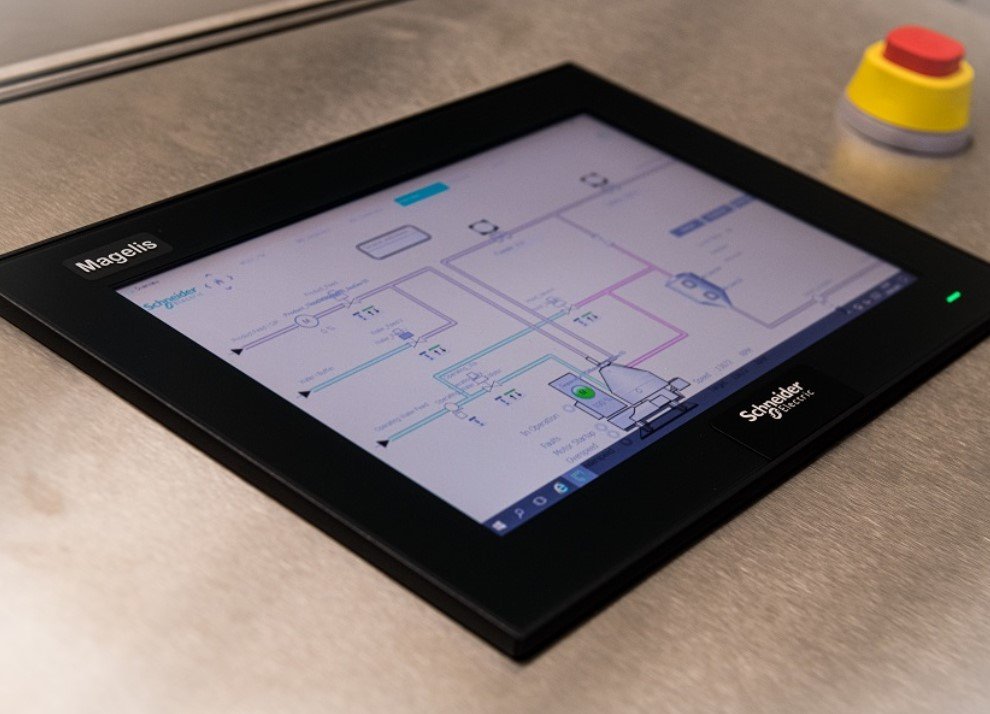In an era of rapid technological change, Software-Defined Automation (SDA) emerges as a pivotal strategy for revitalizing the UK’s manufacturing industry.
The Decline of UK Manufacturing: A Call for Innovation
The UK’s position in global manufacturing has seen a significant drop, slipping to 12th place on the global leaderboard. This decline is occurring amidst a landscape fraught with challenges such as shifting customer demands, persistent talent shortages, and supply chain disruptions exacerbated by Brexit, the COVID-19 pandemic, and ongoing geopolitical tensions.
Fabrice Jadot, Senior Vice President of Next Gen Automation at Schneider Electric, emphasizes the critical role of SDA in addressing these issues. “In an industry rapidly evolving and influenced by regulations, Software-Defined Automation is crucial for maintaining a competitive edge,” he asserts.

What is Software-Defined Automation (SDA)?
SDA revolutionizes operational technology by decoupling hardware from software. This separation allows industrial companies to integrate various automation technologies into a unified system, irrespective of the manufacturer. The result is a more scalable, adaptable, and resilient automation framework.
- Flexibility: Mix and match different technologies seamlessly.
- Scalability: Easily expand operations without being tied to specific hardware.
- Resilience: Enhance system robustness through diversified automation solutions.
Initially adopted by larger, digitally advanced enterprises, SDA is poised to become essential for manufacturers of all sizes seeking flexible and cost-effective automation solutions.
Overcoming Traditional Automation Challenges
Traditional automation systems, often built on decades-old technology, struggle to keep pace with modern demands. SDA addresses these limitations by:
- Centralizing Processes: Streamlining automation workflows to reduce complexity and increase efficiency.
- Reducing Costs: Minimizing technology debt through versatile and reusable software components.
- Attracting Talent: Implementing automated practices like low/no-code development, making the industry more appealing to a new generation of engineers.
Table: Benefits of Software-Defined Automation
| Benefit | Description |
|---|---|
| Flexibility | Integrates diverse technologies seamlessly |
| Scalability | Easily expands to meet growing operational demands |
| Cost Reduction | Lowers expenses by minimizing redundancy and optimizing resource use |
| Talent Attraction | Modernizes workflows, making the industry more appealing to new engineers |
| Enhanced Resilience | Builds robust systems capable of adapting to various disruptions |
Virtualisation: The Heart of SDA
Virtualisation plays a crucial role in SDA by transforming physical processes into virtual ones. This approach allows engineers to consolidate multiple physical components—such as Programmable Logic Controllers (PLCs), Human Machine Interfaces (HMIs), and Industrial PCs (IPCs)—onto local virtual machines. Operating on a hyperconverged compute and storage infrastructure, this consolidation leads to:
- Cost Savings: Fewer physical servers reduce maintenance and operational expenses.
- Increased Productivity: Streamlined processes enhance overall operational efficiency.
- Sustainability: Centralizing resources lowers energy consumption and reduces greenhouse gas emissions.
The Path Forward: Embracing Digital Transformation
To reclaim its standing on the global stage, the UK must accelerate its digital transformation. Embracing SDA is a strategic imperative that can drive productivity and flexibility across the manufacturing sector. As Fabrice Jadot notes, “To regain its competitive edge, UK industrial enterprises must embrace digital transformation to accelerate their productivity and enhance flexibility. Cue Software-Defined Automation.”
Bullet Points: Key Steps for Implementing SDA
- Adopt Open Standards: Ensure interoperability across different systems and devices.
- Invest in Training: Equip the workforce with the necessary skills to manage SDA technologies.
- Collaborate with Innovators: Partner with technology leaders to stay ahead of automation trends.
- Focus on Sustainability: Leverage SDA to create more energy-efficient and environmentally friendly manufacturing processes.
As the manufacturing sector navigates a complex web of challenges, Software-Defined Automation stands out as a transformative solution. By decoupling hardware from software and embracing virtualisation, UK manufacturers can enhance their operational efficiency, reduce costs, and attract top talent. The future of UK manufacturing lies in its ability to adapt and innovate through technologies like SDA, ensuring resilience and competitiveness in a rapidly changing global market.








